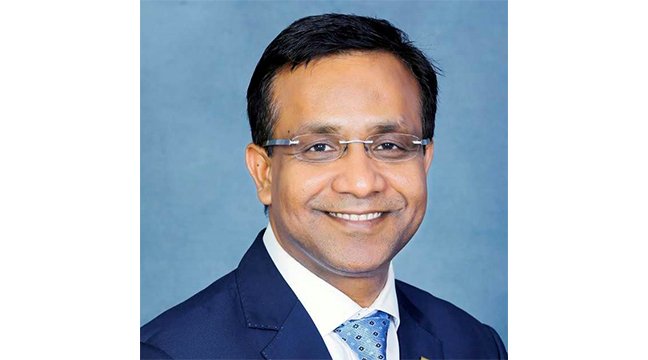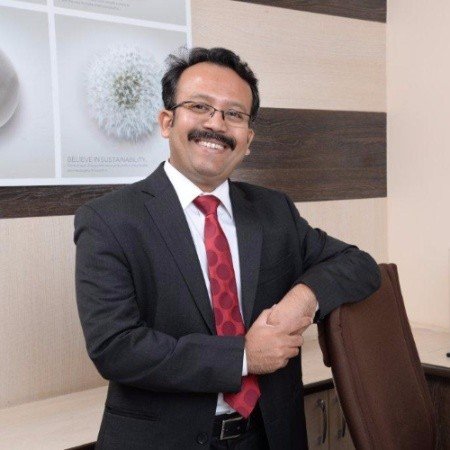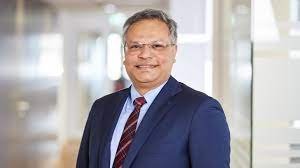While the pandemic accelerated AP Moller – Maersk’s plan to make a bigger push into railways in India, it also comes as the company is diversifying globally and wants to boost revenue from ‘logistics and services’ (non-ocean solutions) which also include road feeder services, air freight, warehousing— critical to support its growing emphasis on end-to-end supply chain management. Globally, the integrated logistics major wants to have a healthy balance between ocean and logistics and services and the strategy remains the same for India. The pandemic has already been the perfect opportunity for Maersk to make an impact along its core value of ‘Constant Care’ as it put together the most complex pieces of a jigsaw puzzle in order to support Indian businesses and the society at large. Now, significant will be to watch how Maersk’s push to provide end-to-end services would drive transformation in India’s logistics sector with addition of value-added services which is an important element of improving profitability and the sheer goal to handhold Indian supply chains while navigating through the complexities of global trade. Vikash Agarwal, the new Managing Director of AP Moller – Maersk in South Asia informs Upamanyu Borah, on the notable opportunities for growth in India and having such an experienced team with rich value proposition—invaluable for delivering on its ambitions for the country.
How is the situation today on the region’s ports and shipping sector after several months the second wave hit? Does it continue to strengthen, or has it plateaued?
Despite the second wave hitting the country in 2021, we continue to see an unprecedented demand till date. We highlighted seeing an upward trend in demand in the second half of 2020 itself. The developed economies of North America and Europe continue to have an appetite for Indian goods across home improvement, retail, electronics, apparel & lifestyle, as well as the food industry.
The exports demand has constantly been on the rise whereas the imports into India have remained subdued. This coupled with multiple supply chain bottlenecks viz. slow cargo movement from port to hinterlands and back, COVID-19-related restrictions, slow-paced port and infrastructure operations, lack of manpower, etc. added up to create container shortages. With the current state of global supply chains, we see the demand plateauing only post the year-end holidays, until then we expect status quo.
What about the volumes and rates?
Talking of freight rates, we must understand that they are a derivative of demand and supply. The demand for containers as well as space on vessels is higher as compared to their supply. This is causing the rates to go up. At Maersk, we want to protect the integrity of both our product and customer promise, which is why we won’t accept anything we can’t deliver on. To further lessen the impact on our customers’ supply chains, given the extraordinary market conditions triggered by the global pandemic as well as other logistical disruptions, we accelerated the induction of around 260,000 new dry containers into our fleet in the second quarter this year. This comes after the 400,000 TEUs added to our fleet between July 2020 to January 2021 and in total, an amount significantly higher than what would be in-fleeted under normal circumstances. That said, equipment supply and the repositioning of empties remain a top priority and teams are working around the clock to reposition them.
How have you stepped in to focus on stabilising earnings at value-generating levels by continuing to strengthen the business and ensuring a soft landing from the currently elevated freight rate levels?
Our strategy to integrate logistics across the journey of the goods gives us an opportunity to diversify our solutions within the logistics landscape. By doing so, we are not depending on earnings from only ocean shipping, we are also creating value for our customers by making it a win-win situation for both. This way, we are strengthening our position in the market while providing our customers with a single-window access to all their logistics needs.
What has changed or what is changing that makes you confident about the success of Maersk South Asia in coming times, with a broader focus on the Indian subcontinent?
We have a vision to become an integrator of container logistics. This means, we want to offer our customers end-to-end solutions for their logistics requirements. As a starting point, we have an extremely strong ocean shipping network which is being combined with landside transportation, both by road and rail. We also offer LCL solutions and air freight for rapid transit. There are also significant efforts going in the direction of warehousing options for our customers to take care of their storage requirements. All these solutions are backed by strong digital platforms that add further value and efficiency to logistics. We even have a state-of-the-art Blockchain underpinned platform TradeLens which allow for thorough visibility and digital documentation throughout the journey of cargoes.
By bundling all these products together, we are providing a single-window access to every logistics requirement that customer’s supply chains would demand. But we do not stop at developing and providing solutions for our customers, we are also investing heavily in customer experience. We constantly keep talking to our customers, understand their pain points and requirements and design solutions that suit them. We are investing in tailor-made solutions to ensure that our customers get the best experience by partnering with us. It is this attitude that is helping us grow alongside our customers.
Any top-notch services and customised solutions with enhanced TAT you are currently offering your Indian customers in cross-border commerce? Conversely, what are the key opportunities you see?
We have recently started a very interesting solution for India-Bangladesh trade. Usually, Bangladesh-bound cargo from Northern or Western parts of India would be moved to Mumbai by road or rail and from there it would connect an ocean service that would tranship it via hubs such as Colombo and then connect on feeders that would take it to its destination ports in Bangladesh. This entire journey takes 25 to 30 days in normal course. To cut down the transit time, we have now introduced a rail service that connects Punjab to Kolkata, from where it then goes to Bangladesh on a sea barge. This solution has brought the transit time to almost half of what it was earlier. In addition to the rail plus sea barge solution, we are also providing customers with customs clearance and first- and last-mile solutions to bring the integrated logistics solution to life.
We are also working on several other solutions to complement this service which include cross-border road solution, river barge, warehousing at origin and destination, so on and so forth.
Market volatility is something that’s out of our control. So are you doing anything to mitigate the risk coming from that while going about the goals you have set? Can you shed some light on that?
While the overall mitigation of risks in the ecosystem is already spoken of through the provision of integrated logistics to our customers, there are different aspects to achieving it. For example, we are working with our customers on long-term commitments. What this means to customers is that they are assured of getting robust and dedicated solutions, including space on vessels, which is currently the biggest crunch in the market. What we are trying to achieve through long-term commitments is solid visibility beyond the immediate horizon. That way, we can plan better, execute better and thus bring in more predictability and reliability to customer’s supply chains.
We are also tailoring solutions in the form of digital platforms like TWILL which is helping several SMEs who seek for shorter validity but the same great experience. This way we are not relying solely on big customers but reaching out to the small ones too who might not have full expertise in supply chains, but we step in to manage it for them.
From your point of view, what is the scope is for incorporating things like Blockchain and automated technology into operations and the joint commitment to develop such technology solutions?
We are aware that the cost of logistics contributes to about 14-15% of the GDP in India as compared to 8-9% in more developed countries. The inefficiencies in our logistics ecosystem are responsible for this high cost in India. One of the most effective solutions to removing these inefficiencies will be higher adoption of digital solutions.
Together, Maersk and IBM developed TradeLens a few years ago. It also It is a neutral platform which utilises data from shippers and cargo owners, 3PLs and freight forwarders, intermodal operators, customs and government authorities, ports and terminals, and several ocean carriers. This data along with digital documentation helps to improve operational efficiency and creates value for everyone. The data also allows the network partners to provide their customers with deeper visibility into the entire journey of their cargo from origin to destination. The success of such a universal platform that securely shares data lies in more and more stakeholder accepting it. So, while we have developed it with IBM, its success really is shouldered by other founder carriers, our customers, authorities, intermodal operators and so on.
Automation is also an extension of what digitalisation and technology can bring to the table. Automation in processes and systems has helped us tremendously in handling customer’s requirements and queries. It has streamlined processes to ensure that customers get rapid resolutions to their requirements.
A lot of executives in the market predict further consolidation in the coming months. So could you build on that point, just about the potential for mergers and Maersk’s appetite for growth?
At Maersk, we are trying to build our expertise across different aspects of logistics. Market dynamics are changing and we see more and more consumers doing their shopping online. With an increasing relevance of B2C supply chains and in line with our strategy to become the global integrator of logistics, we recently announced the acquisition of Visible Supply Chain Management- a B2C logistics company focussed on parcel delivery and e-fulfilment services in the US, and reached an agreement to acquire Denmark-based B2C Europe- a logistics company focussed on B2C parcel delivery services in Europe. Last year, we had made acquisitions in warehousing and customs space as well. Going ahead, we will continue to evaluate and undertake such routes to growing our capabilities across the board of logistics.
The logistics sector has never had so much attention when food supply chains became stretched, e-commerce exploded, and a global vaccine distribution effort got underway. Is now a good time for companies to bet bigger on operations as the uncertainties looms large with the pandemic yet to settle down?
One of the most important lessons that COVID-19 pandemic has taught us is that we must be resilient in whatever we do. Be it any business or operations, if we are resilient and are ready to accept what is thrown at us and adapt to the situation, we should be fine.
The uncertainties in the market might have closed some doors but have also opened others.
I personally think that instead of betting bigger, operations need to focus on what is it that the market demands. Customer-centricity must take the centre stage for every decision that is made. If the customer or market demands to go big on operations then be it, but if it demands on improving efficiencies, then just going bigger is not the solution.
The pandemic is taking a lot longer to settle down than what we anticipated in the first place. The uncertainties continue even today and the way the market responded could not have been predicted by anyone. The sectors which are growing such as retail & lifestyle, home appliances and so on, might have to scale up while others might have to look at diversifying to sail through.
How has been your experience climbing the career ladder? And, after taking to the new role as MD for Maersk South Asia, how are you looking at things differently? What are the plans and initiatives nurturing under your vision, especially for the India-and-the-World route development?
Throughout my corporate career with TNT, CEVA, and now with Maersk, I have always been on a transformation journey—one which helps me become a better version of myself. I was delighted to be given the opportunity to join Maersk, since it has been on a similar path and is making significant strides to transform into a global integrator of logistics. Right from the time I joined, my team and I had challenged every possible status quo to find opportunities to collaborate with our customers.
Maersk is a company driven by relentless customer focus and we believe we can leverage our assets, global network, our expertise, and digital platforms to serve our customer better and delight them with our services. We start with customer and their needs and that is what defines and guides our efforts.
Our vision for India is to hold and develop our bold and inspiring global vision to connect and simplify supply chains. We have taken up the challenge to double our logistics and services footprint within 2025 while offering customers innovative logistics solutions and play a significant part in the country growth.







